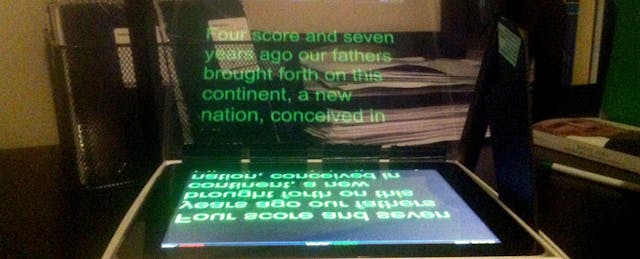On a rudimentary level, teaching tends to involve combining auditory and visual stimuli in a way that leads to the generation of new knowledge. In a traditional classroom, this process might manifest itself as a teacher talking while writing on the board, or pointing to a student's work while explaining how to use an algebraic equation.
When it comes to the use of technology, the user experience often involves a level of interactivity or personalization that bears no resemblance to a traditional classroom experience. Yet at their core, even the most inventive new platforms and systems often rely on fine-tuned variations of the classic method of combining auditory and visual information.
Despite this ubiquitous fusion of auditory and visual stimuli, there has been little research on the optimal way to combine them. For example, it remains unclear how closely written text should mirror what's being said. One theory is that if the two sources present different information, attempting to make sense of everything could lead to cognitive overload and poorer comprehension. Alternatively, unique text that concisely summarizes the narration may draw attention to important points. In addition, the need to create a single coherent narrative out of non-identical pieces of information could lead to deeper processing that enhances learning. The latter effect is known as the "desirable-difficulties" hypothesis.
New research led by UCLA's Carole Yue helps bring some clarity to previously inconclusive findings. The study, which will appear in a forthcoming issue of the Journal of Education Psychology, aimed to combine visualizations and audio with text that was specifically designed to encourage these "desirable difficulties."
One way to to maximize learning?
In the initial experiment, participants saw one of four types of PowerPoint presentations about the life cycle of the star. The “identical-full-text” condition consisted of animations and narration, with the exact text of the narration appearing at the bottom of the screen. The “abridged-text” version was similar, but text at the bottom of the screen was a shortened version of the narration that used similar phrasings to convey essential points. In the control condition, the presentation contained narration and animation with no text, and in the podcast condition there was simply narration with a blank screen. After viewing the presentations, participants were tested on their recall of the information, as well as a series of more difficult "transfer" questions whose answers were not explicitly stated but could be inferred from the presentation.
The researchers found that participants in the abridged-text version performed better than those in the full-text condition on both sets of questions. On the recall questions, even participants in the control condition performed better than those in full-text condition. A follow-up experiment largely confirmed the initial findings; learning was maximized when the on-screen text was an abridged and similar-but-distinct version of the narration. It seems the difficulties caused by the shorter text fragments were in fact desirable.
Integrate fragments of summarized text...
That's the good news. The bad news is that when asked what type of presentation they preferred, participants in either of the text conditions were significantly more likely to choose the full-text version. They were drawn to the condition that seemed easiest while failing to consider how a challenge could promote learning. Thus the takeaway for designers is to be cautious about taking advantage of the spatial affordances technology provides. Just because it's easy to reproduce every spoken word in text form doesn't mean it should be done. Even providing the option to view text that mirrors narration could lead students to select an inferior lesson.
...even if people don't like it
Like a lot research, the study brings up more questions than it answers. Do the benefits of text that's abridged and distinct generalize to different types of students and subject domains? What other difficulties might be desirable? And where exactly is the line where a difficulty becomes undesirable? Eventually the answers to these questions ought to help educators construct lessons that challenge students in all the right ways.
Work Cited
Reducing Verbal Redundancy in Multimedia Learning: An Undesired Desirable Difficulty? (PDF)
Journal Link: http://psycnet.apa.org/index.cfm?fa=buy.optionToBuy&id=2013-09151-001


